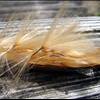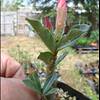This plant may be available to buy
Click the banana to see

|
click pics to enlarge |
|
Zone 9-10 or part-time Houseplant Desert Rose is one of our ultra favorite plants. Native to arid areas of Africa including Madagascar, Tanzania, Kenya and Uganda Adenium obesum plants deserve FAR more appreciation click pic to enlarge Desert Rose is excellent in pots especially for people who "kill everything" because Adenium obesum lives with little care and can take a good deal of neglect
Always at its best with some attention, your Desert Rose will become larger, more interesting and more valuable every year. Large specimens can sell for $2,000+++ for older plants with large bases and a multitude of branches. More branches mean more flowers which are extremely attractive click pic to enlarge Flowers are best during the spring and fall months in Florida, but flowering can occur any month of the year. Older plant, better care = more flowers, more often Flowers can be seen in shades of pink, rose or red in color for conventional USA varieties The coolest Desert Rose plants are hybrids (many dozens of them) produced in China, Taiwan and Thailand, and some in India, like these below we enjoy in our personal desert rose collection click pic to enlarge click pics to enlarge click pic to enlarge Desert Rose is a succulent bush with thick fleshy branches. The 'obesum ' name refers to the large fat base of the plant. Here is a perfect specimen of the Desert Night Fork variety click pic to enlarge In time, sometimes many years, Adenium obesum produces bean-like seed pods Many USA growers use branch cuttings for propagation which results in an inferior plant in appearance as the base never develops properly (obese/fat) Desert Rose plants from seed develop vastly the best character with no two plants alike in shape. When your seed pod is fully ripe on the plant, it will split open revealing seeds with beautiful "wings" attached. Nature makes the wings so that seeds will quickly blow away. Be watchful for splitting then pick the pod click pic to enlarge Seeds like those above (naturally fresh ripe) have a high germination percentage. Pull off the fuzzy wings then plant. As with all seeds, plant at depth of seed (in this case, VERY shallow) in high quality pro mix (peat moss based) sterile soil that DOES NOT contain any included fertilizers, hormones or any other chemicals. Keep soil top lightly moist and locate outdoors in hot weather and bright light for quickest germination (4-25 days) depending on freshness, proper planting and variety The leaves are a glossy green and semi-deciduous, depending on your care and your climate outdoors Rarely, one sees variegated desert rose leaves If left without added water and no rain for a long time or after a cold night, your desert rose can lose most or all of its leaves. Never fear, they will re-grow after watering or after warm weather returns. Here is a flower picture in late February 2004 in South Florida, but the Desert Rose has lost 100% of its leaves. If caterpillars defoliate your plant, it's leaves will re-grow anew The common enemies of Desert Rose are aphids, caterpillars, sometimes scale insects and fungus. Bugs are pretty easy to handle if you observe and inspect your Desert Rose often ...you'll see the pests and can take action. Fungus is serious and often deadly click pic to enlarge The picture above shows a plant that survived a fungus attack but with major damage. The fungus stopped progressing on its own which is not usual. Most common is desert rose fungus makes branches or the base soft/mushy and eventually the plant collapses, dead. Death may be as fast as one week. Surgery is required as soon as fungus is detected to cut away all the soft/mushy goo and into the good flesh. Let wounds air dryPosition Desert Rose in full sun or some afternoon shade for best flowering, but use even less water in partial shade conditions. Select an acid soil mix with plenty of peat moss and organic elements and coarse sand. Be certain the soil mix and the pot drain very well Desert Rose responds amazingly well to food so use plenty of time release pellet food. Select a flat formulation like 14-14-14. Growth will be much faster and flowers will be more prolific as well. With a very well drained soil and pot and with quality fertilizer available, you can water often to stimulate maximum growth and flowering Each desert rose plant from seed is an individual. This baby we grew from seed (below) has been fed only once and already wants to join its big blooming brothers ...only 3 months old click pic to enlarge From time to time your Rose will be attacked by aphids. Use a water spray or soap solution to keep it clean of pests. Never use chemicals (although we use pyrethrum spray [organic] for caterpillars). Sevin spray is also in our arsenal About once a year, you should "up pot" your desert rose. The idea is to expose more base and lift your plant higher to do so. Take your desert rose out of it's pot and add more 'Pro-Mix' sterile soil to the bottom of your pot, about one inch is usual. Now re-pot that one inch higher. You usually will brush/remove soil from the base then repot. If your pot is too small for another year of growth, select the next size larger pot. Always be certain of drainage material (like rocks) at the bottom of your pot Conventional garden center Desert Rose plants are OK starter plants, but the Far East has the jump on the USA for great hybrids. We have two named hybrid collections... To see or purchase fabulous live plant hybrids, click here To see or purchase dozens of hybrid seeds, click here |











